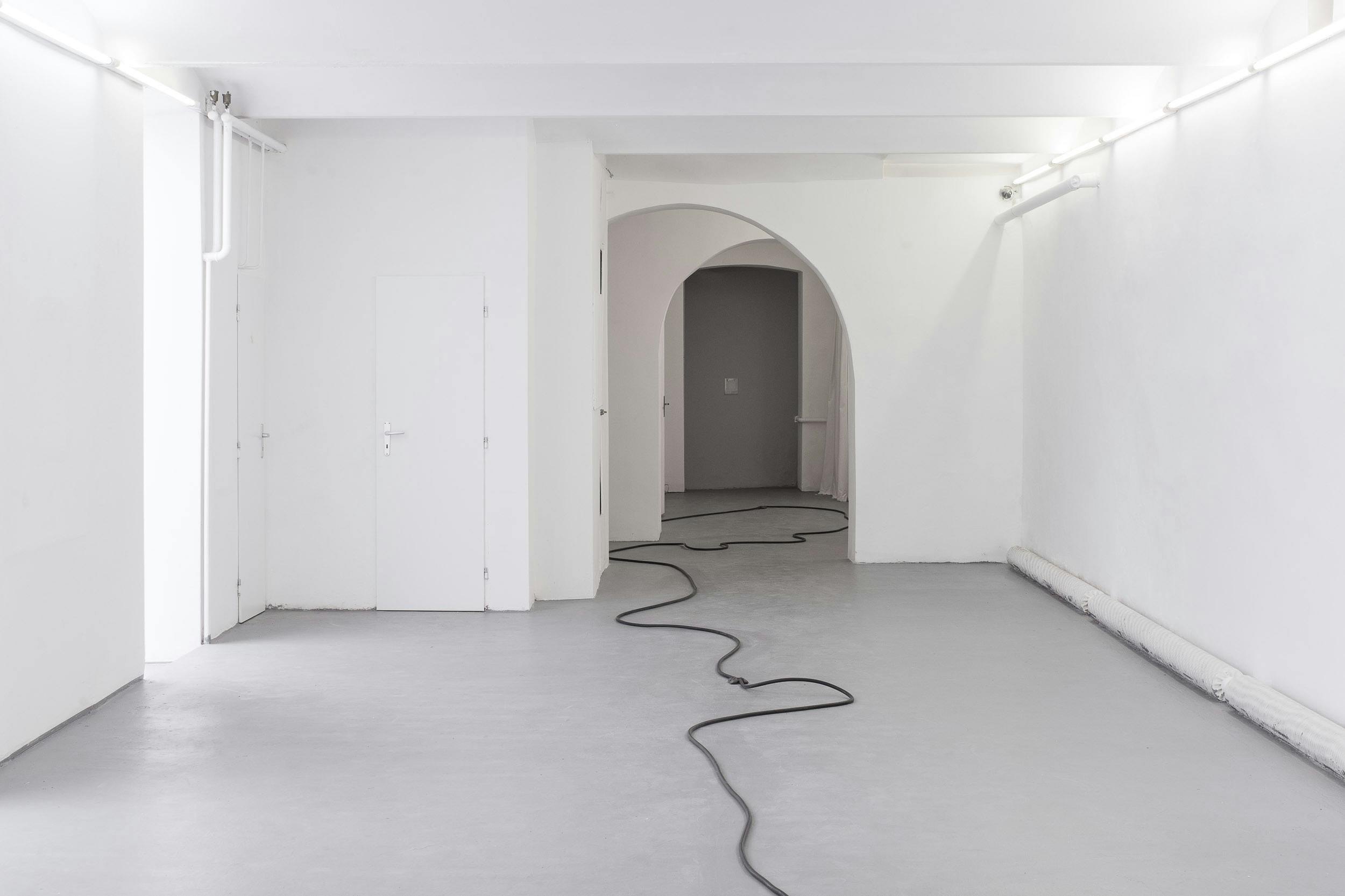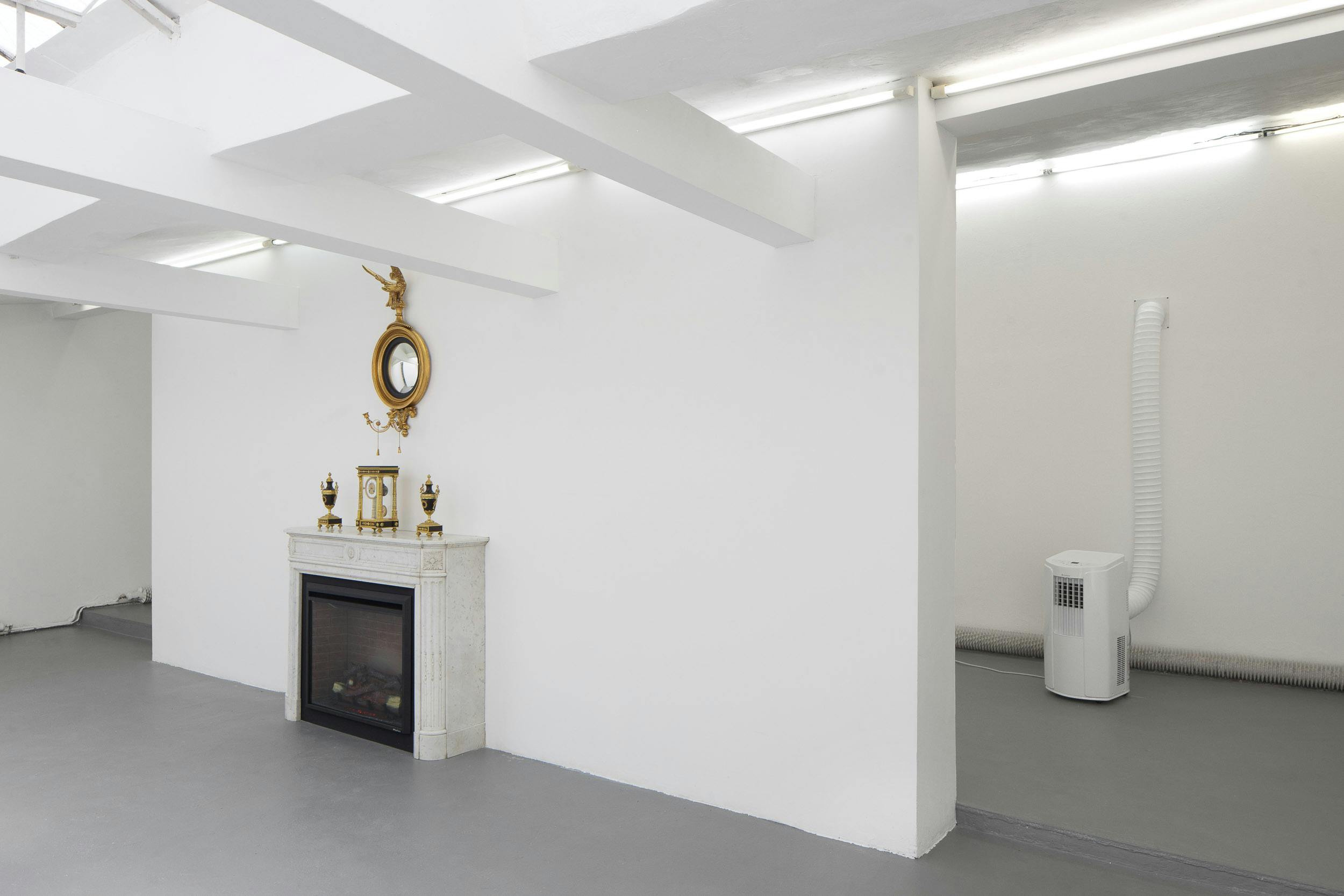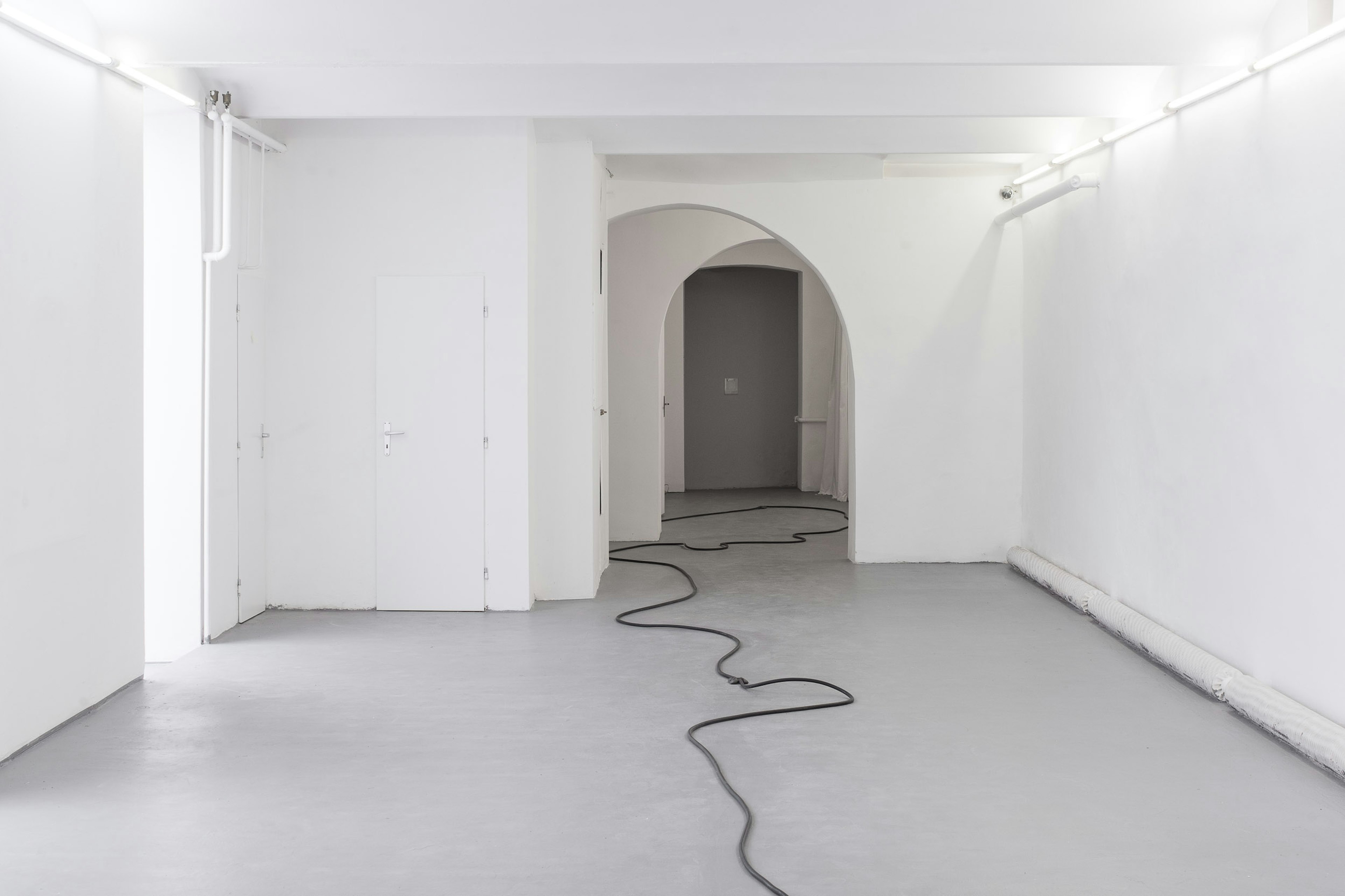Tricia Nixon: Summer of 1973




June 28 – September 16, 2018
Devon Dikeou was a 2018 Black Cube Artist Fellow. This project was in collaboration with Centre for Contemporary Art FUTURA in Prague, CZ. Visually sparse, the exhibition included minimalist installations that engaged viewers’ senses—the unusual feeling of cold and hot air touching your skin, the sound of 1970s era radio, and the absent pulse of a full-service gas station bell.
Tricia Nixon: Summer of 1973
Devon Dikeou
“In the summer of 1973 I was in a small town in Kentucky in the scourging heat watching this huge theater of a TV which took the space of a merry-go-round and had three lights—green, red, blue, and there was just one air conditioner which you could stand in front of to get cool. Then on one of three major networks that happened to be on that gargantuan TV, two strange things happened: images of ‘70s gas guzzlers lining up at filling stations for hours in lines that were blocks long. It was the beginning of the energy crisis . . . Then a second thing: Tricia Nixon, who I believe had a White House wedding—a big deal as there are not many—and there's this story of her turning up the air conditioner on high so she could have a fire going all in the midst of a DC summer . . .” – Devon Dikeou
Devon Dikeou’s exhibition Tricia Nixon: Summer of 1973 is latently uncanny, as the audience is confronted with an exhibition space that feels vacant, yet occupied—domestic, yet sterile. Dikeou’s practice is a conceptual and physical bricolage composed of a diverse range of materials that range from memories to functional devices. The works in the exhibition hold a ghost-like recollection of history, story, personal experience, and perceptions of American culture.
Visually sparse, the exhibition includes three large-scale minimalist installations that engage viewers’ senses—the unusual feeling of cold and hot air touching your skin, the sound of 1970s era radio, the absent pulse of a full-service gas station bell. In Tricia Nixon: Summer of 1973, Dikeou weaves seemingly banal stories with everyday objects to draw out conversations about American democracy, class, commerce, environment, and aura.
